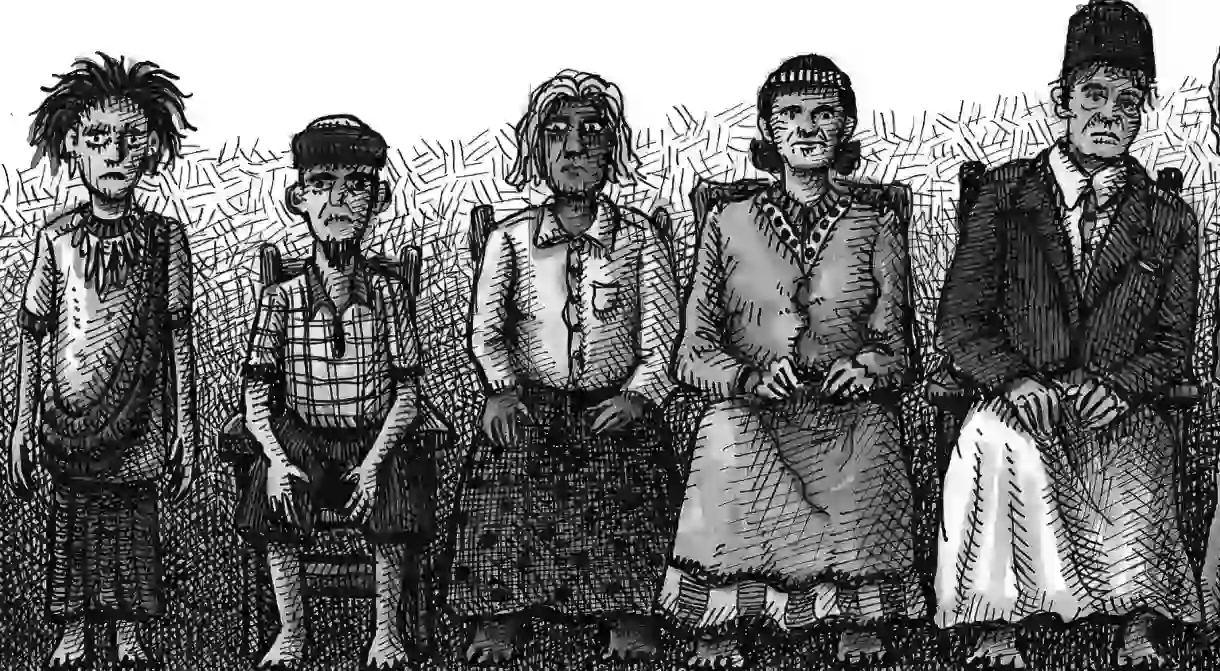How People Around the World Part with their Dead

For as long as humans have experienced death, we have created elaborate rituals to deal with grief.
In From Here to Eternity: Traveling the World to Find Good Death, Caitlin Doughty explores death with a global lens. While many look to funerals to showcase cultural differences surrounding death, Doughty also examines what different communities and cultures do with the bodies once the funeral is over.
Funeral pyre
Most commonly associated with the Vikings, the funeral pyre has existed for millennia. Unlike industrial cremation, funeral pyres use wood as the fuel for the fires and are usually practiced in the open air. Usually, these pyres are a pile of wood with the body placed on top, like the one Darth Vader is burned on in Return of the Jedi (spoiler, sorry, but if you haven’t seen it by now…). Funeral pyres are still practiced in many Buddhist and Hindu religions but is often considered taboo in the Western world because of misplaced concerns about smell and hygeine. In From Here to Eternity, Doughty visits the United States’ only open-air human cremation pyre. Located in Crestone, Colorado, this funeral pyre is only used for local residents, in order to limit the number of novelty burnings.

Mummification
While “mummy” has Egyptian connotations, the practice has been preserved in a variety of cultures. Mummification refers to preserving the body either through embalming or drying out and shrinking the body. From Here to Eternity looks specifically at Tana Toraja’s mummification practices in Indonesia. Natural mummification through drying can be difficult in the humid Indonesian environment. This area historically practiced the animistic Aluk religion which had 7,777 different rituals around preparing the body, including animal sacrifice and washing the body; the book explores the ways the community maintains the mummies years after death.
Recomposition
As people look for more environmentally friendly options, recomposition serves as a burial practice for those who like the idea of returning to the earth. While decomposition happens naturally, scientists are exploring options for expediting the process. The Urban Death Project, based out of Western Carolina University, has been conducting experiments for ways to achieve recomposition in as few as six months. At the moment, donating your body to the project is the best way to go about being recomposed, but Coeio is a company who has just started offering burial shrouds infused with mushrooms which will feed off your remains for faster decomposition.
Green burials
Burials remain common in the United States, as most people are embalmed and then buried in a wooden or metal casket. Some are pushing back against this practice, looking instead for “greener” options that avoid the chemicals associated with embalming and forgo the box, intending to go straight into the ground to decompose naturally. Unlike the recomposition method previously mentioned, there is no intention of the ground the body is placed in to be used for soil. The grave site will remain, like most cemeteries, just with less of the associated environmental damages.

Industrial cremation
Industrial cremation is the most common form of body disposal in the developed world. These processes are efficient and are able to handle the demand of modern urban centers. But many of these facilities lack any spiritual component. In Japan, cemeteries like Ruriden aim to connect ancient practices with modern technology. Inside the temple sits a giant wall of Buddha statues lit by LED lights. A computer is programmed to light up, with the press of a button or swipe of an ID card, either showing where your ancestor is on the wall or everyone who died that particular day. These lights even brighten in subtle patterns to show sunsets or night skies.
Sky burial
Sky burial is one of the rarest forms of body disposal. The practice involves culturally specific rituals and leaving the bodies out for vultures or other scavenger animals to consume. For the Parsis, a group descended from Iranian Zoroastrianists, the practice comes from the belief that the elements are sacred, and to bury or cremate dead bodies would pollute those revered elements.

From Here to Eternity explores more than just body disposal practice, diving into unusual funeral traditions, Mexico’s Día de los Muertos, and more. This book is perfect for lovers of the macabre. But more than that, Doughty argues that the United States has become too removed from our dead, damaging the way we handle grief. By examining how humans cope with death around the world, readers are able to scrutinize both their mortality, as well as their relationship with death.













